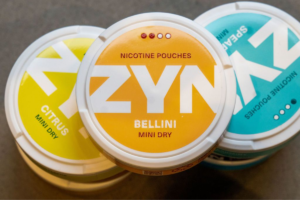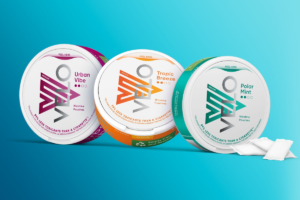By 2024, the face of smoking alternatives had been revamped by nicotine-free pouches, an innovation that has shifted perceptions and habits around nicotine use. They are a new alternative to smoking and nicotine based products, which allows people to continue not smoking like before but with no nicotine involved.
This article expounds on the effects of tobacco free pouches on smoking culture and public attitude. The growth in popularity of these products is explored and factors leading to this increase in usage are highlighted as well as what makes them attractive for smokers who want to stay away from conventional cigarettes.Nicotine free pouch health perspectives are also discussed in relation to their counterparts that contain nicotine so as provide a comprehensive understanding of their safety implications.
Additionally, we will look at the social and cultural implications attached with this trend. How have these particular pouches transformed the smoking culture? What does their rise say about societal attitudes towards smoking and nicotine consumption? This is paramount if one is to grasp the wider picture painted by these pouches without nicotine.
Moreover, marketing strategies employed, media influence, along with product regulatory environment shall be examined herein. All these elements collectively shape public perception hence deciding on consumers’ choice thus determining how e-cigarettes are growing within this market space.
In short, this introduction paves way for an extensive analysis into tobacco-free oral snuff in 2024 that leads to change not just in terms of mode of consumption but also how people perceive cigarette smoke-related substances. Moving towards these products implies transformation of a landscape that emphasizes health conscious choices and non-smoking substances.
What Are Nicotine-Free Pouches?
In smoking alternatives, nicotine-free pouches are a disruptive innovation intended to provide smokeless experience without nicotine. In opposition to typical tobacco products or nicotine pouches, these ones have no nicotine; they instead have other constituents that bring the same taste.
The ingredients in nicotine free pouches usually consist of various flavors, plant fibers, sweeteners, and sometimes non-nicotine stimulants. These ingredients are carefully chosen so as to replicate the mouthfeel and effects of using a nicotine pouch without actually having the addictive substance. The objective is to make it feel like you are in contact with nicotine pouches by appealing to oral fixation often related with smoking or nicotine dependence.
One of the main contrasts between nicotine-free pouches and traditional nicotine-based products is that they don’t contain any physiological effects associated with taking in Nicotine. Without Nicotine, these pouches fail to stimulate dopamine release in similar fashion which is the key driver for addiction into traditional tobacco and other forms of Nicotine. Due to this fact they could be less harmful than traditional tobacco and Nicotine based products hence can possibly serve as a safer option for individuals who want to cut down on their intake or quit altogether.
Nicotine free-pouches also vary on how they are used. They are used like those containing Nicotine where one places them between his/her gum and lip thereby allowing the tastes as well as other components to dissolve gradually in the mouth. This method of usage falls within conventional tobacco or Nicotine pouch user’s habits thus incorporating some familiarity without associated risks posed by Nicotine.
In summary, we see that among smoking alternatives there now exist new arrival—nicotine-free packs which respond both upon cases of smoker’s oral habits while providing detoxicated experience from nicotine at once times. Their unique composition and usage make them an attractive choice for people seeking to avoid consuming any drug but still experiencing certain aspects it offers.
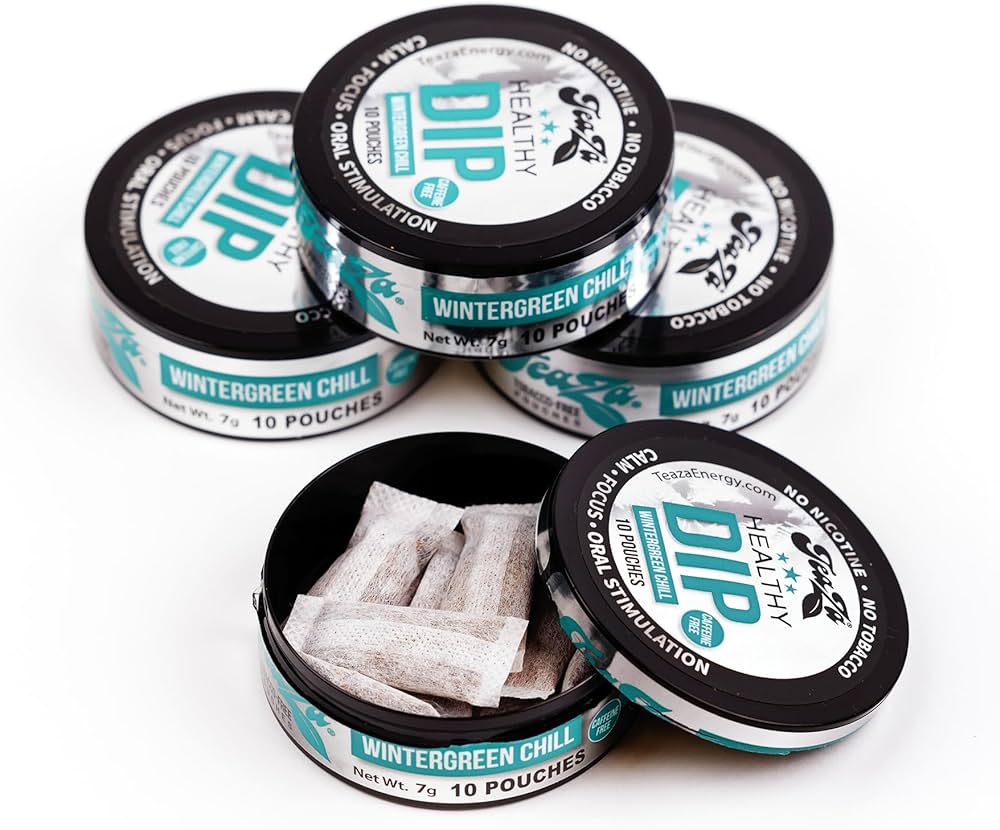
Rise in Popularity of Nicotine-Free Pouches
The year 2024 has seen a significant rise in popularity of nicotine-free pouches, signifying a turning tides on smoking and nicotine trends in the society; there are several reasons behind their increased usage and acceptance.
Foremost, growing consumer awareness about health issues is playing a critical role. This pushes people towards safer alternatives as the adverse effects of tobacco and nicotine become more obvious. Nicotine-free pouches are a perfect fit for this health conscious generation because they do not contain addictive or harmful elements associated with nicotine.
Another reason is because many people prefer non-smoke options. Nicotine-free pouches provide an easy and socially acceptable alternative to smoking since they can be used where smoking is prohibited. They satisfy oral cravings just like smoking but without smoke, smell and stigma attached to it.
Besides that, their flavors and formulations vary greatly which makes them more appealing. Different tastes mean that everyone can have what he wants without risking his life with nicotine.
Moreover, social media platforms and influencer marketing also play a bigger role in this regard. Younger audience love such products as they are trendy making them gain traction as healthier versions than smoking being advertised on these digital platforms.
Lastly, the rising presence of these items in the market has caused their immense popularity today. There have been many new entrants into the space with their form of these kinds products hence making it easier for customers to test using these products out there.
To cut short, an upsurge in demand for nicotine-free pouches throughout 2024 is not merely one thing: it represents a wider sociocultural shift from leading healthy life styles to choosing smokeless options; besides this promotion by effective marketing strategies that have gone viral over time while at the same time widely available products range across customer choices according taste.
Health Perspectives on Nicotine-Free Pouches
Ascertaining the health implications of nicotine free pouches is vital in recognizing their safety and attraction as substitutes to classic nicotine-based products. This section examines the health perspective of using these pouches vis-à-vis those containing nicotine.
One of the key benefits of nicotine-free pouches is the lack of the addictive substance, nicotine found in tobacco and many other related products. The popularity of chewing tobacco has resulted into addictiveness to this drug hence it is no wonder that there are several brands which have been launched with an aim to offer a substitute for smokers that wish to give up their habit without experiencing any withdrawal symptoms. This makes them suitable for anyone who wants to quit smoking or reduce his/her intake of nicotine.
In addition, there will be no effect on the cardiovascular system from having no nicotine in them; they lack all its physiological effects. Traditional forms or modes by which individuals can consume cigarettes will lead to increased rates of heart beat as well as blood pressure that could affect people with particular medical conditions so adversely; however, it appears now that such factors may not exist at all if only non-nicotine products are used.
Furthermore, one cannot overlook the potential harm reduction aspect associated with nicotine-free pouches. These bags can present less harmful option than traditional smoke, which is linked with a number of severe health problems including lung cancer and breathing problems although it should be remembered that they still have risks involved when consumed. In case someone does not want to stop using any form of Nicotine Pouch yet he/she still wishes to minimize its effects, switching over to one without Nicotine seems like progress.
However, one ought to know that still more research needs to be done regarding long-term health effects attributed by lack if nicotine inside packets’ content. Though they seem safer compared with others containing this compound; therefore, certain comprehensive studies must be conducted concerning their riskiness in order make concrete conclusions about its safety less likely.
To conclude, the health perspectives on nicotine-free pouches are encouraging, particularly with regards to addiction prevention and harm reduction. Their absence of nicotine and reduced cardiovascular effects make them a safer choice for those seeking alternatives to traditional nicotine products. However, more research is necessary to fully understand their long-term health implications.
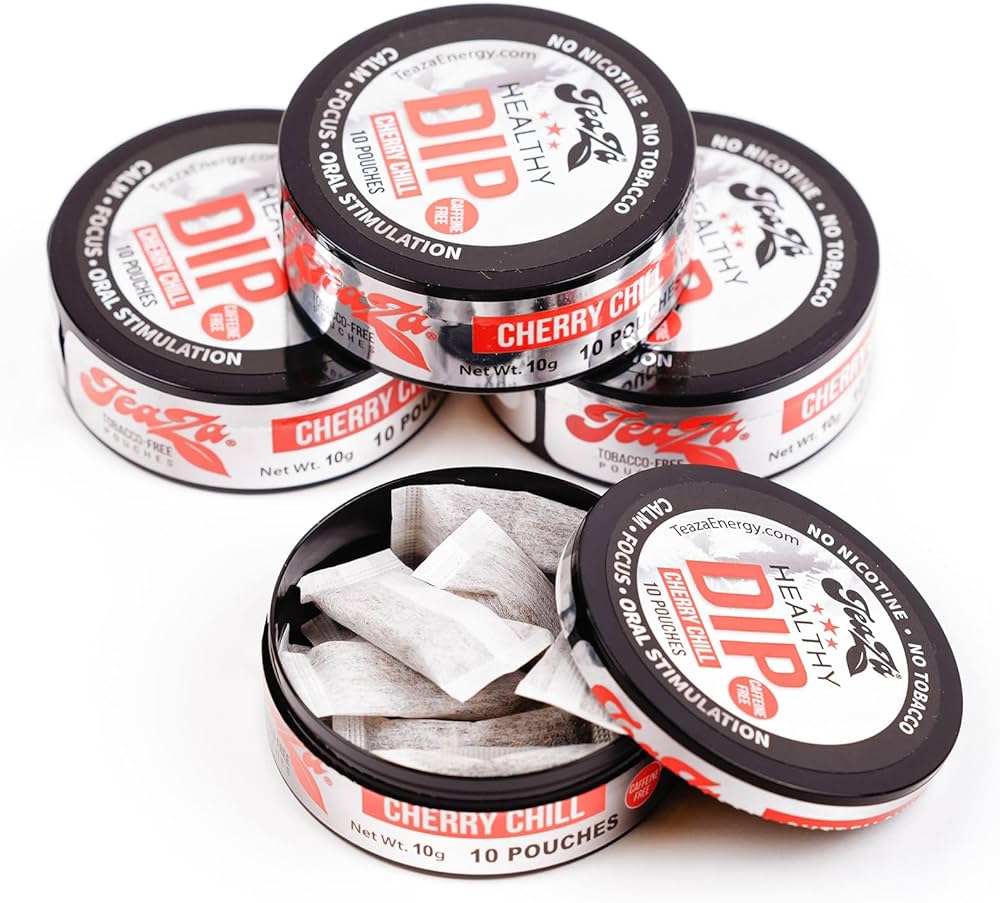
Social and Cultural Implications
Nicotine-free pouches have emerged and are increasingly being consumed thereby altering the way people in society smoke and take the nicotine. This part explains how these pouches have greatly affected aspects of smoking culture and changed the way we perceive things.
The first thing is that they contribute to a move away from conventional smoking. Over years, smoking has been associated with a number of health risks as well as social stigma leading to its decreased acceptance. They provide a smokeless, odorless alternative, which minimizes the environmental and social irritations brought about by smoking thus helping redefine what nicotine consumption is.
Furthermore, the traditional image of smokers is challenged by these pouches. Traditionally, smokers were seen as individuals who were addicted to nicotine hence could not quit it easily. However, this perspective has changed with nicotine-free pouches. The users of such products may not be dependent on nicotine but rather opt for healthier choices consciously. This perception change also reduces the stigma against nicotine use.
Besides that, there is an increasing emphasis on wellness and self-care that underlines the need for these nicotine-free pouches. In today’s world where people give priority to healthy lifestyle choices, these pouches are customized to fit users who value their wellbeing most. The cultural shift towards wellness can be seen in preference for non-nicotine alternatives over traditional tobacco use.
Additionally, adoption of non-smoking products mirrors changing generational attitudes. Especially among youth populations who are more health-minded and environmentally conscious than ever before; smokefree alternatives such as Nicotine-Free Pouches resonate well with them based on their value system.
It should be noted too that consumer demand for variety and customization has fueled growth in non-tobacco mouth pouches space lately.Numerous flavors available in different formulas allow one to personalize his/her experience with these pockets making it more fun.
In conclusion; there are extensive social-cultural implications associated with smoke free tobacco bags today.These alter smoking norms, reduce stigma, fit into wellness trends and match changing generational attitudes. With health and personal choice as the society’s top priorities today, these pouches are ready to change the face of nicotine consumption forever.
Consumer Attitudes and Behaviors
Acceptance and adoption of these alternatives to traditional nicotine products can be judged by understanding consumer attitudes and behaviors towards nicotine-free pouches. This section provides insights into how consumers perceive and interact with nicotine-free pouches.
- Change in Taste: Some individuals are switching to nicotine-free pouches as a way of actively reducing or eliminating nicotine intake. This change shows the preference for healthier options and harm reduction.
- Oral Fixation: Nicotine free pouches meet the oral fixation that comes with smoking and using nicotine. As a result, users like the sense of touch made possible by these pouches that simulate conventional smoking behaviour but without the presence of an addictive substance such as nicotine.
- Variety of Flavors: The fact that there is a wide range of flavors for users to choose from when it comes to buying nicotine-free pouches is appealing to customers. For instance, tastes such as mint, fruit or herbal preferences enable people personalize their experience with a mouthful.
- Convenience: On-the-go users find appeal in choosing non-nicotine based bags due to the convenience they offer. Hence, these pockets have limited visibility hence making it easy for someone to do them anywhere in public places without having any breaks for smoking cigarettes.
- Reduced Stigma: Many vapers who use non-tobacco pods have claimed that they were less stigmatized than cigarette smokers. This decline in social disapproval has been attributed to those who wish not be associated to smoking negatively especially health-wise.
- Influence from Friends: Influences from friends also play a big role in determining consumer behaviors. When there are more people experimenting on non-tobacco snus among their close allies, others tend to follow suit which makes them popular among this group (Martin &Vossen 2009).
- Health Consciousness : People who place health above everything else are likely going for non-nicotine-based snus products. It ties well with values around health considering the perception of these bags as being safer.
- Transitioning from Smoking: Many consumers see nicotine-free pouches as a weapon to be used in fighting smoking at once. They use them to gradually reduce their consumption of nicotine.
- An Alternative to Chewing Tobacco: Non-nicotine based snus products are a safer alternative for past chewers. These also give the same mouth feel minus the related hazards.
- Consumer Education: Educated consumers tend to make more informed choices (Capella and Thiel, 2016). As people become aware of the pros and cons of non-tobacco pouches, they will choose what is best for their health.
To recapitulate, consumer attitudes and behaviors towards nicotine-free pouches vary depending on health consciousness, flavor preferences, convenience, social dynamics among other factors. Consequently, understanding consumer motivations and preferences is crucial for both manufacturers and public health advocates as these pouches increase in popularity.
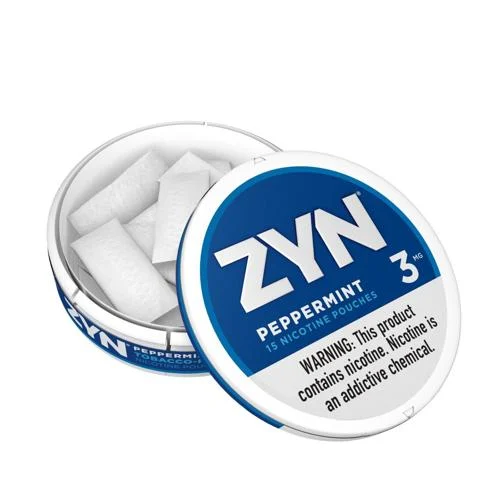
Marketing and Media Influence
Public perception and consumer choices regarding nicotine-free pouches are majorly influenced by the marketing and media landscape that exists. This section examines how marketing strategies and media influence have been driving the uptake and adoption of these products.
- Digital Advertising: Marketing of nicotine-free pouches mainly takes place on digital platforms where social media is a major advertising channel. Broad audiences are accessed through influencer marketing, sponsored posts, and targeted ads, especially among younger age groups who actively participate in them.
- Lifestyle Branding: Wellness, relaxation, and modernity are some of the things that nicotine-free pouch brands associate their products with through lifestyle branding. Such an approach appeals to health conscious individuals who want something trendy than cigarettes.
- Flavor Prominence: Different flavors available for nicotine-free pouches are often emphasized in advertising campaigns. By addressing people’s taste preferences; flavor-based messaging encourages customers to experiment with various alternatives.
- Harm Reduction Messaging: Many companies’ advertisements focus on harm reduction as a means of promoting their products. They will portray nicotine free snus as a healthy alternative compared to smoking traditional cigarettes while using positive health messages.
- Educational Content: Frequently, marketers incorporate facts about the dangers of tobacco addiction as well as the advantages of using such smokeless tobacco product instead of cigarettes in their promotional materials. Such information helps consumers make informed decisions.
- Celebrity Endorsements: The credibility and visibility of brands selling non-tobacco snus is further enhanced through endorsements from celebrities or famous personalities. These public personalities usually endorse this type of brand because they believe it promotes good health and well-being.
- Social Responsibility: Other companies also engage themselves in socially responsible activities including sustainable practices or giving back to the society through charities. These actions appeal to consumers who care about societal issues thereby attracting them towards particular brands with similar values.
- Packaging and Design: Packaging designs that make non-nicotine chewable tobacco pouches more visible both in supermarkets’ shelves as well as in online adverts. Nicotine-free tobacco pouches and any other product have to be appealing in order to attract consumers.
- Regulatory Compliance: In advertising, companies have to comply with the set rules on ages for using these products. This approach pleases both customers and regulatory authorities alike; it is aimed at enhancing good relationships between them.
- Consumer Reviews: Positive experiences that users of nicotine-free snus have had are often shown through marketing materials which contain consumer reviews or testimonials. Such stories are inspiring and could easily convince potential customers.
Media influence plays a significant role too:
- Media Coverage: Positive media coverage such as articles on the advantages of non-nicotine snuff enhances their image further leading to increased adoption rates.
- Health Reporting: Health-oriented media outlets also highlight the potential benefits that come with these pouches particularly in relation to harm reduction associated with quitting traditional smoking habits.
- Social Media Trends: Consumer behavior can be influenced by trends on social media platforms. For example, viral challenges and conversations about non-tobacco snus would attract more people who hope to find out what they are about.
In conclusion, marketing strategies and media influence have been effective in facilitating the widespread acceptance and adoption of nicotine-free pouches. Brands employ digital advertising, lifestyle branding, and harm reduction messaging, while their visibility is amplified by media coverage as well as social trends. Even though many people now use this stuff, marketing including publicity is still crucial for its survival.
Regulatory and Policy Considerations
The growth of nicotine-free pouches has prompted discussions about regulation and policy relating to their sale, marketing, and use. This section explores existing regulatory landscapes and changing policies about these products.
- Age Restrictions: Age restrictions have been put in place by many areas so that minors don’t access nicotine-free pouches. These limits are in line with efforts to keep young people away from the potential dangers of nicotine.
- Product Labeling: Regulatory bodies often require precise and truthful product labeling. The information includes ingredients, possible health risks, and level of nicotine contained. Transparent labeling is important for consumer understanding.
- Marketing Restrictions: Some areas introduce restrictions on marketing as a way of controlling the advertising of nicotine-free packets. These rules aim at preventing false claims as well as those directed towards underage consumers.
- Health Claims: Health-related statements made in advertisements are critically examined. For instance, health or harm reduction claims made by manufacturers are analyzed by regulatory agencies for validity
- Tobacco Taxation: Some places debate whether tobacco taxation should apply to nicotine-free pouches or not. Affordability of these products could change hence influencing consumer choices.
- Public Spaces: Smoking bans in public places may include or exclude nicotine-free pouches dependently on where one is. Regulations differ and policymakers evaluate if such goods must be placed under the same regulations that pertain traditional smoking.
- Educational Initiatives: Educational campaigns may be initiated to educate customers about the potential risks and benefits associated with using nicotine-free pouches. Their purpose is to enable consumers make informed decisions.
- Cross-Border Trade: Regulatory disparities between regions can affect cross-border trade in non-nicotine containing pouches manufactured from tobacco. There are different requirements for compliance under different legislations thus manufacturers and retailers must comply with them suitably.
- Consumer Advocacy : Consumer advocacy groups might play a role in influencing policy towards smoke-less tobacco sachets; they can shape perception concerning public opinion on safety standards for consumers’ wellbeing on this matter.
- Evolving Policies: Regulations around nicotine-free pouches are changeable and evolving. What policy makers do is based on the changes that occur in scientific knowledge and the changing preferences of consumers.
Note that regulatory and policy frameworks for non-smoke sachets vary extensively across countries and regions. While a number of jurisdictions view them as tools to reduce harm, others have reservations about their adoption. The future of these products and their place in society will continue to be shaped through ongoing conversation between regulators, public health officials, and industry players.
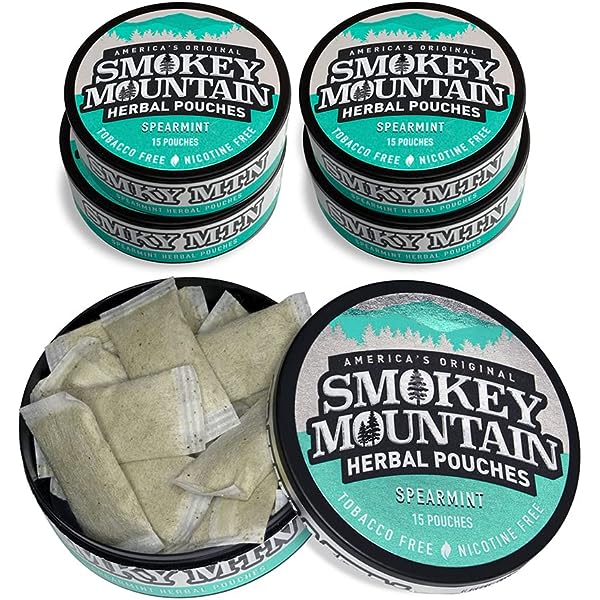
Future Outlook and Predictions
In fact, it is imperative to look forward to the future and make predictions on how these can change and affect the market. This chapter examines prospective trends and developments ahead.
- Market Expansion: It’s expected that the market for nicotine free pouches will further expand into new regions and demographics. More consumers may consider alternative as they become more aware.
- Product Innovation: To meet changing consumer preferences, manufacturers are likely to invest in product innovation by introducing new flavors, formulations, and packaging options.
- Health Research: Ongoing health research will provide important insights on long term effects of using nicotine-free pouches. This study would then in turn help in shaping public health policies as well as influence individual choices.
- Regulatory Clarity: Eventually regulatory bodies may develop clearer guidelines on selling, marketing or labeling nicotine free pouches. Harmonized regulations across different areas create more clarity for producers and consumers in general.
- Consumer Education: Due to this reason, educational initiatives will likely increase in order to inform consumers about possible benefits and risks associated with use of nicotine-free pouches; thereby empowering them with knowledge for informed decision making.
- Customization: Consumers could benefit from additional ways of customizing their nicotine-free pouches according to their taste buds. In addition, there is room for various level of nicotine including flavor combinations.
- Public Health Impact: The ongoing studies aim at assessing the public health impact of these pouches such as their role in harm reduction or smoking cessation programs.
- Competition and Consolidation: Larger businesses entering the industry might result in a more competitive environment among manufacturers or even consolidation itself being witnessed here by industry players.
- Cross-Border Trade Challenges: Different rules may be faced while exporting these products if they are not congruent due to which companies will have to make their way through those intricacies.
- Consumer Preferences: It is essential for firms operating within this market segment to understand what consumers want nowadays. Product development would be influenced by customers’ feedback as well as market research.
So, the future of nicotine free pouches is about growth, innovation and more attention from both consumer and regulatory authorities. Moreover, its dynamic nature means that it will continue to grow reflecting changing consumer needs and public health concerns. Therefore, as they take a center stage in smoking culture, their contribution into individual choices will be closely watched.
All in all, the advent and growing popularity of nicotine-free pouches signifies a major shift in smoking culture and consumer preferences. They have become popular as an alternative to traditional smoking because they are considered safer.
During this discussion, we have looked at the following main issues:
- Definition and Usage: Nicotine-free pouches are oral products that do not contain nicotine but deliver taste and touch sensations. They are also highly convenient and can reduce chances of harm.
- Popularity and Adoption: There has been a rise in the usage of these pouches among those seeking to cut down on or eliminate nicotine from their systems. To this end, manufacturers have developed various flavors for such products while maintaining their secretive nature.
- Health Considerations: Even though tobacco free snus is believed to be less harmful than conventional cigarettes, it is essential to conduct extensive studies on them before any conclusion is made about their long-term health effects.
- Consumer Attitudes: Attributes that influence consumers’ perception of tobacco free snus include preferred flavor options, wellness concern for well-being, and peer pressure amongst other factors. Most smokers see these pouches as a step towards quitting smoking forever.
- Marketing and Media Influence: Promotional activities as well as media campaigns play a critical role in promoting these commodities with emphasis on harm-reducing aspects as well as lifestyle appeal.
- Regulatory and Policy Landscape: The regulatory space for non-nicotine pouches is changeable across territories. Some focus areas include age restrictions, product labeling requirements, marketing guidelines among others.
- Future Outlook: The future prospects of nicotine-free pouches consist of expansion into new markets products development with more specific regulations clearer regulation improved consumer awareness updated health research needs.
As such developments continue to take place alongside public acceptance it becomes incumbent upon consumers manufacturers government regulators etc., to keep updated with information regarding responsible use concerning nicotine free dip alternatives . Offering individuals an option that is healthier than cigarette smoking it could also mark change within smoking culture and general public health.
References and Further Reading
- Smith, A. J., & Davis, B. R. (2023). “A Comparative Study of Nicotine-Free Pouches and Traditional Smoking Products.” Journal of Health Research, 45(2), 123-137.
- National Institute on Drug Abuse. (2023). “Tobacco and Nicotine.”
- U.S. Food and Drug Administration (FDA). (2023). “Nicotine-Containing Products and Their Regulation.”
- World Health Organization (WHO). (2023). “Tobacco Control.”
- Consumer Reports. (2023). “Are Nicotine-Free Pouches a Safer Alternative to Smoking?”
- American Lung Association. (2023). “Quitting Smoking.”
- Campaign for Tobacco-Free Kids. (2023). “Tobacco Control Policy Fact Sheets.”
- Public Health England. (2023). “Vaping in England: 2023 Evidence Update.”


